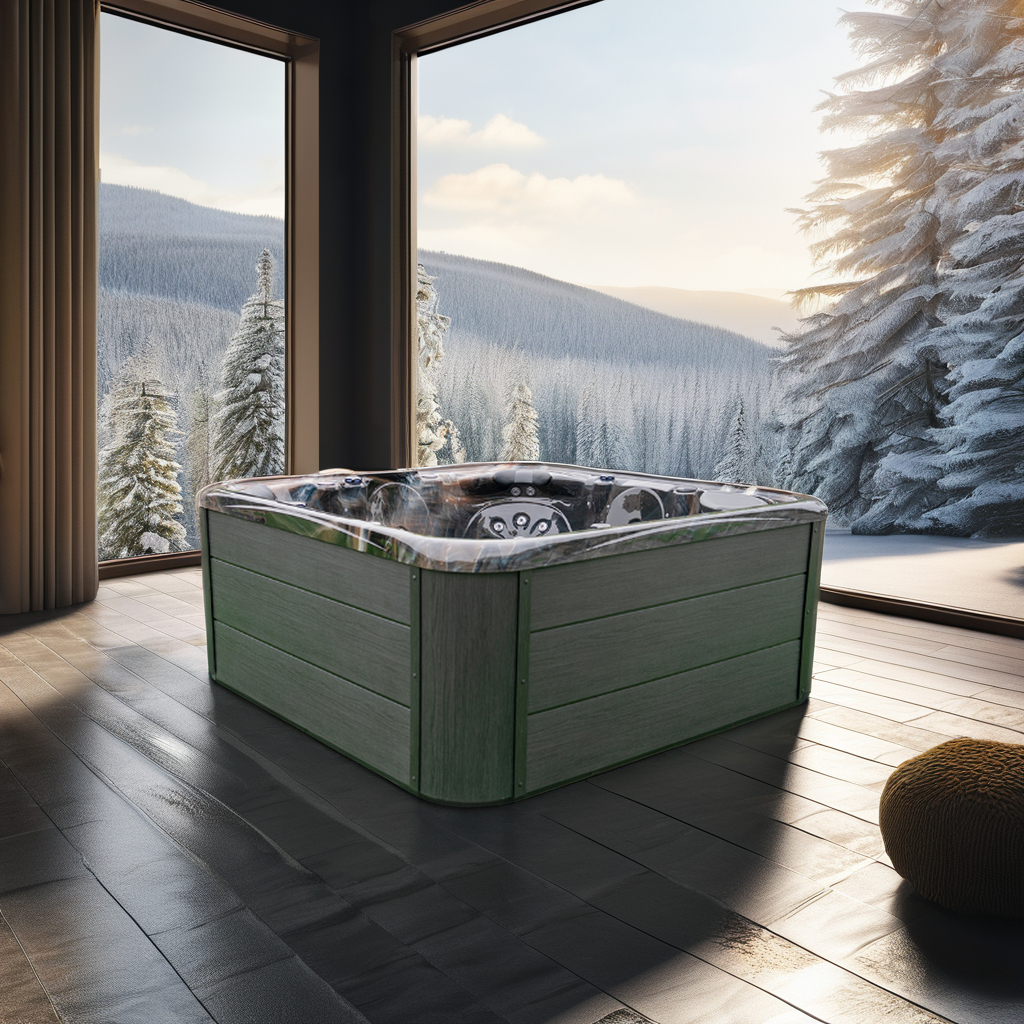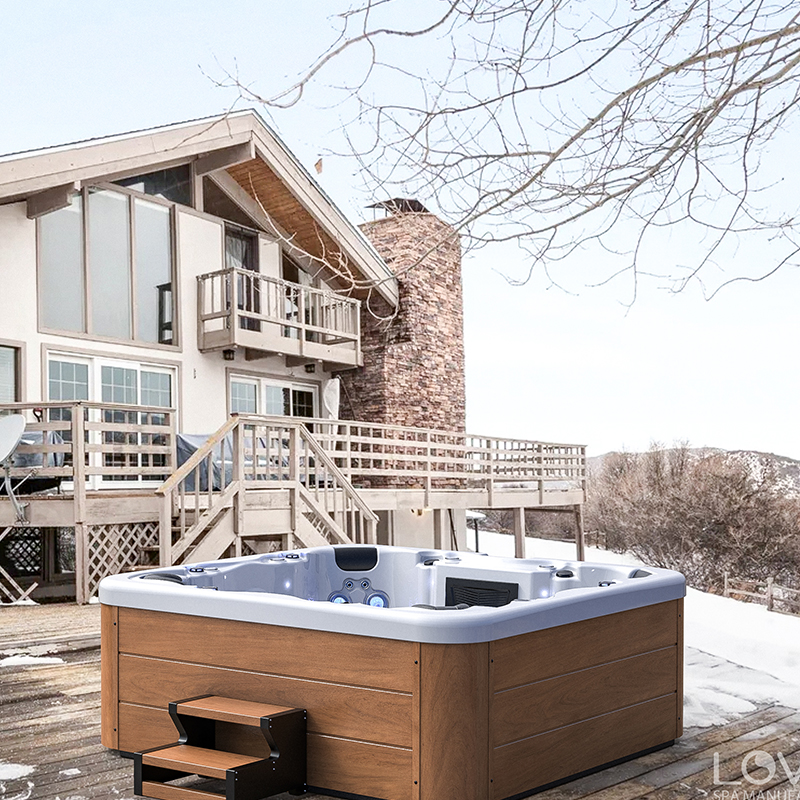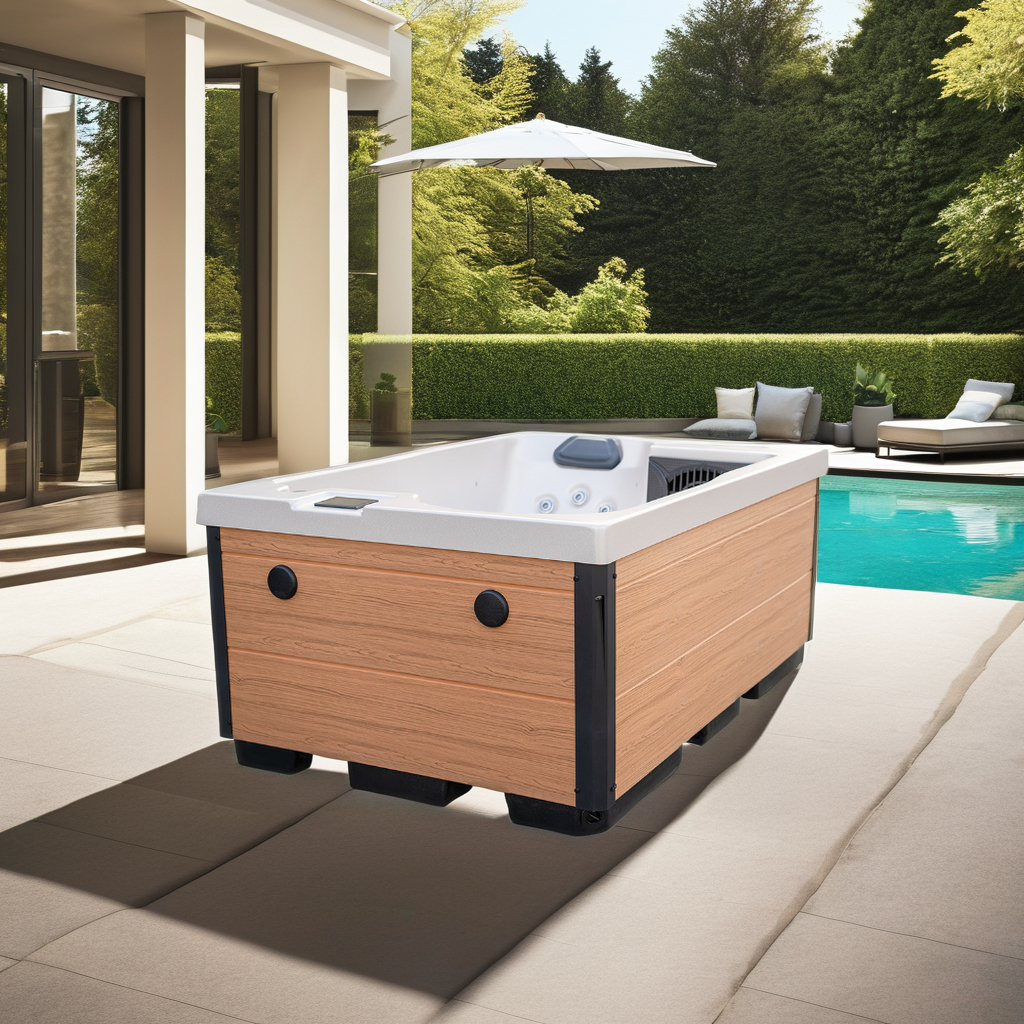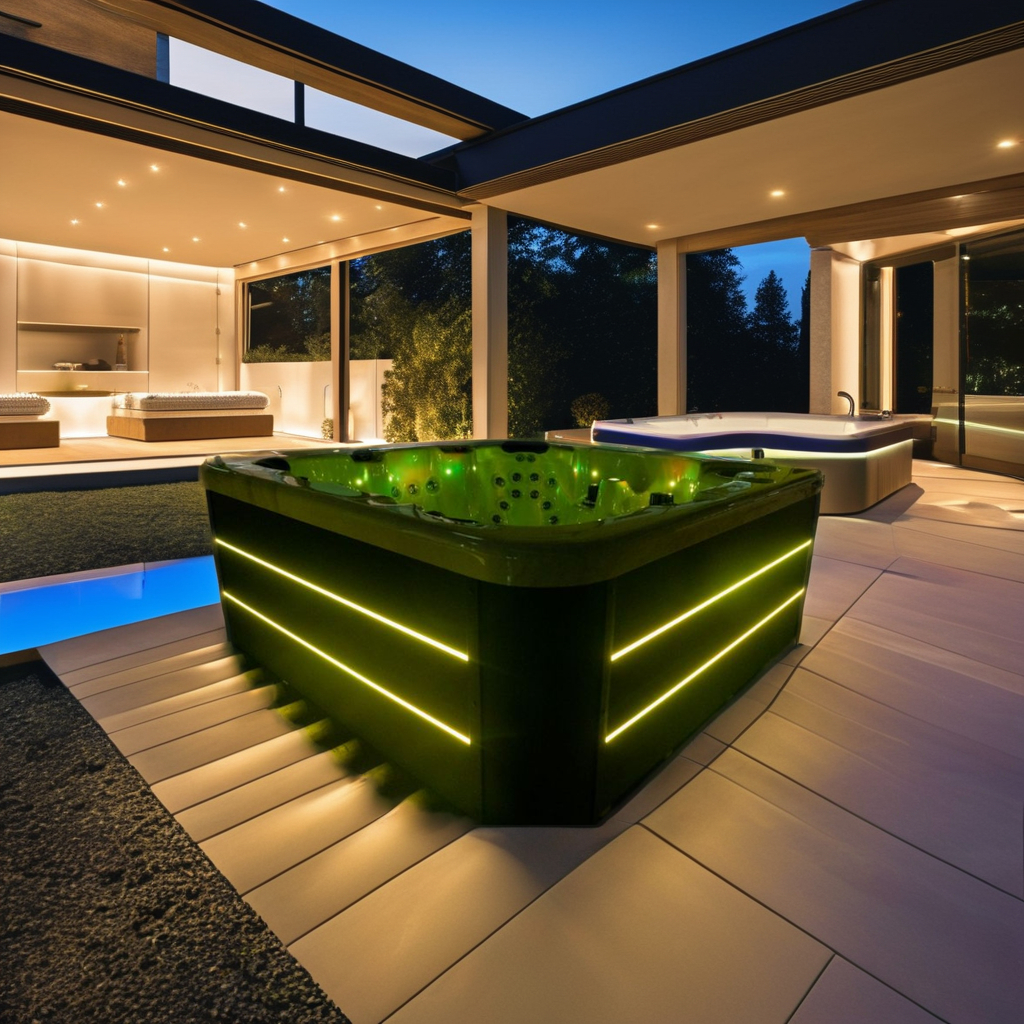
Will acrylic spa hot tubs crack in the cold?
2025-09-10 15:35Acrylic spa hot tubs are widely used in modern homes and outdoor recreational settings due to their comfort, excellent thermal insulation, attractive appearance, and lightweight design. However, as more and more users install acrylic spa hot tubs outdoors, on balconies, and even in cold climates, the question of whether they will crack in cold environments has become a growing concern.
This article will address the question, "Will acrylic spa hot tubs crack in the cold?" It will systematically analyze the material properties of acrylic, the principles of thermal expansion and contraction, structural stress distribution, the effects of frozen water, usage habits, and maintenance methods. This article aims to provide professional and practical theoretical support to help users scientifically understand the performance and potential risks of acrylic spa hot tubs in cold conditions.

Acrylic spa hot tubs: Material composition and characteristics
Before discussing whether acrylic spa hot tubs will crack in the cold, it is important to first understand the basic structure and material properties of acrylic spa hot tubs.
1. Physical Properties of Acrylic Sheets
Acrylic, also known as polymethyl methacrylate (PMMA), is a thermoplastic with high light transmittance, excellent impact resistance, and good processability. Typical properties are as follows:
· Tensile strength: 50–77 MPa;
· Heat deflection temperature: approximately 100°C;
· Low-temperature toughness: significantly decreases between -10°C and 0°C;
· Coefficient of thermal expansion and contraction: higher than ceramics and metals, lower than polyethylene;
· Density: approximately 1.18 g/cm³;
· Non-hygroscopic, with an extremely low water absorption rate (approximately 0.3%);
· Not resistant to sharp impacts, but exhibits a certain degree of ductility.
2. Structural Composition of Acrylic Spa Hot Tubs
Acrylic spa hot tubs are typically not made of pure acrylic. Instead, they are manufactured through the following processes:
· A pressed acrylic surface;
· A multi-layered back-coat of resin mixed with fiberglass (for reinforcement);
· A supporting structure (metal frame or polyurethane foam) installed at the base;
· A plumbing system, nozzle system, thermostat, etc. installed.
Thus, the impact and crack resistance of an acrylic spa hot tub depends not only on the surface itself but also on its composite structure.

Cold Environments: What Impacts on Acrylic Spa Hot Tubs?
Whether an acrylic spa hot tub will crack in the cold isn't a simple yes or no question; it depends on multiple variables. The following is an analysis of the key influencing factors:
1. Material Brittleness Due to Low Temperatures
Acrylic, at low temperatures, experiences common thermoplastic issues: decreased toughness and elasticity, and an increased risk of brittle cracking. Especially at temperatures approaching -10°C or below:
· The previously ductile surface becomes rigid;
· The ability to release internal stress decreases;
· External forces (such as localized impacts) are more likely to cause cracks to expand.
2. Thermal Expansion and Contraction and Structural Stress Concentration
As a multi-material composite structure, the thermal expansion coefficients of each layer (acrylic sheet, fiberglass layer, and metal components) of an acrylic spa hot tub vary. In cold environments with large temperature swings between day and night, this can cause interlayer displacement or stress concentration. If stress is not effectively released, the following may occur:
· Localized warping;
· Separation of the backing fiberglass layer from the surface layer;
· Surface cracking or the development of spiderweb-like fine lines.
3. Residual water in the tub expands upon freezing
Water expands by approximately 9% when it freezes. If an acrylic spa hot tub is not thoroughly drained after use, freezing water in cold conditions can:
· Cause high pressure to squeeze the showerhead pipes and seals;
· Crack internal PVC or ABS fittings;
· Cause cracks in the acrylic surface due to internal expansion;
· Cause overall leakage in the water system.
4. Thermal shock caused by sudden temperature changes
Rapid heating (such as injecting hot water directly at sub-zero temperatures) can cause stress concentration in the material, resulting in the so-called "thermal shock effect":
· The temperature difference between the inside and outside of the acrylic sheet is too large, causing drastic changes in its molecular structure;
· Localized weak areas can easily become crack initiations;
· If microcracks already exist in the tub, they can easily spread rapidly.

Under what circumstances are acrylic spa hot tubs more likely to crack?
Based on the above analysis, the following typical scenarios make acrylic spa hot tubs more susceptible to cracking or breaking in cold weather:
· Installed outdoors without insulation, especially in high-altitude cold regions;
· Failure to drain the tub after use, allowing residual water to freeze overnight;
· Power outages or heating system failures, resulting in prolonged exposure to sub-zero temperatures;
· Long periods of unused tubs and unsealed tubs, leading to repeated freezing and thawing of the tub structure;
· Aging tub rims or drain openings, creating structural weaknesses;
· Human negligence leading to the direct injection of hot water during extremely cold weather, causing thermal shock.
How to prevent acrylic spa hot tubs from cracking due to cold weather?
To ensure safe operation of acrylic spa hot tubs in winter, comprehensive measures should be taken in design, installation, and maintenance.
1. Reserve insulation space during installation
· Outdoor acrylic spa hot tubs should be protected by a structure (such as a sunroom or roof);
· Fill the tub with insulating foam or rock wool;
· Choose a base material with excellent thermal insulation properties;
· It is recommended to add automatic drains and heating system power backup.
2. Drain the water completely after use
· Especially during cold weather or before extended periods of non-use, empty all water.
· Use compressed air to blow out the showerhead piping and pump system.
· Remove the filter and clean the pump and outlet.
3. Maintain low-temperature heating or anti-freeze mode
· Some high-end acrylic spa hot tubs have a "winter warming" feature that maintains the water temperature at 10-15°C to prevent freezing.
· If conditions permit, maintain a low-power constant-temperature system.
4. Avoid extreme temperature fluctuations
· Never fill the acrylic spa hot tub directly with hot water when it's completely cold.
· It's recommended to fill the tub in stages to allow the material to gradually acclimate to the temperature changes.
· Strictly avoid rough handling such as breaking or scraping the ice.
How can I tell if my tub has been damaged by the cold?
Some visible and potential signs indicate that an acrylic spa hot tub may have been damaged by low temperatures:
· Spider-web-like cracks or localized blistering on the surface;
· Water leaks during operation of the water pump;
· Abnormal or clogged water flow from certain showerheads;
· Failure of the drain seal, leaking into the base;
· Slight deformation or sinking of the tub.
If any of these symptoms are observed, stop using the tub immediately and have it inspected and repaired by a professional to prevent further damage.

Can acrylic spa hot tubs crack in the cold?
The conclusion is: Under certain conditions, acrylic spa hot tubs can indeed crack in the cold. This is primarily due to the following factors:
· The inherent brittleness of the material at low temperatures;
· Stress accumulation caused by thermal expansion and contraction between structural layers;
· The destructive force generated by the expansion of frozen water inside the tub;
· Whether the user has proper usage and maintenance habits.
However, it is important to emphasize that as long as the user takes appropriate precautions such as freeze protection, drainage, and insulation, acrylic spa hot tubs can be used safely in cold environments. Therefore, the key isn't whether the acrylic spa hot tub itself is "cold-proof," but rather whether the user possesses the correct operating and maintenance procedures.
How do I compare your spa prices with other suppliers?
While some suppliers offer extremely low prices, they often compromise on components and build quality. Our prices reflect factory-level efficiency, premium materials, and global certification compliance. When comparing, consider lifespan, warranty, support, and brand value. Ask us for a side-by-side quote and experience the value behind our pricing.
